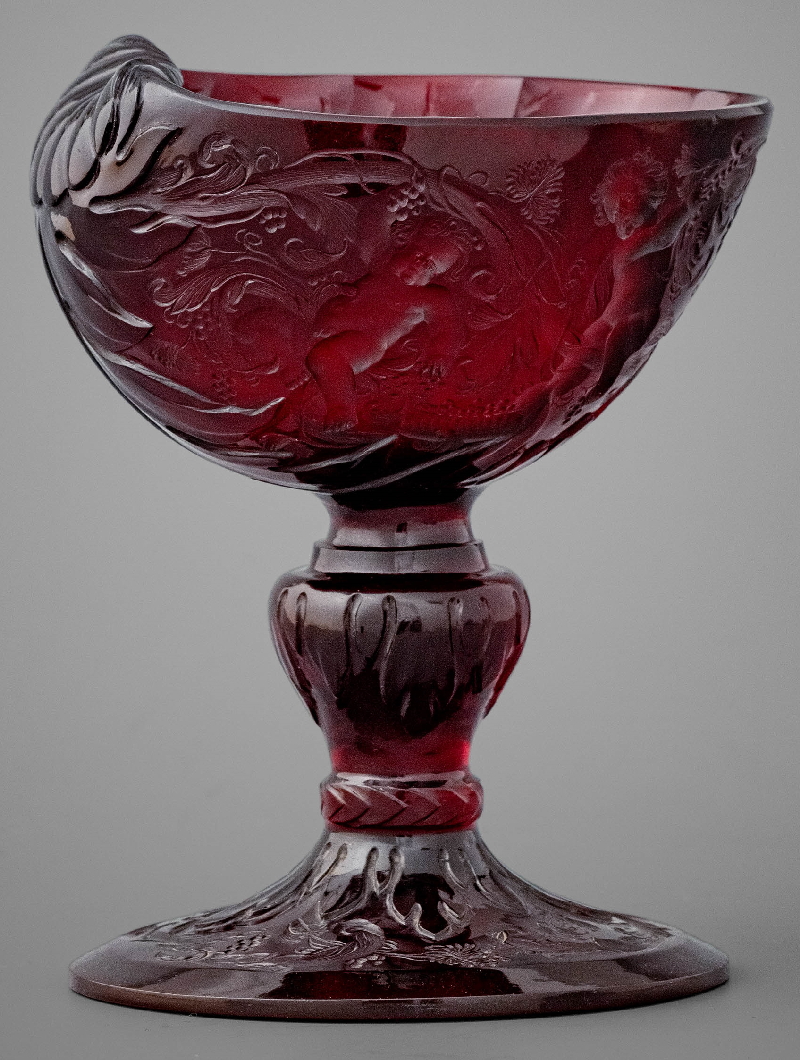Господдержка предприятий-производителей строительных материалов

The Amsterdam Rijksmuseum acquired a unique ruby-red glass shell-shaped goblet by the 17th-century German alchemist, apothecary and glassmaker Johann Kunkel.
A deep, intense red color was obtained by adding gold to the glass, following a technique developed by Kunkel.
The goblet dates from around 1685, when Johann Kunkel was in charge of the glass workshops at the court of Friedrich Wilhelm I, Elector of Brandenburg. Only about 20 early ruby-red Kunkel glasswares are known, and the shape, style, and engraving of this goblet are unique among them.
The goblet has an engraved image of putti frolicking around the vines. The work is attributed to the glass engraver Gottfried Spiller (1663–1728), who engraved several of Kunkel's vessels. The glass is processed in such a way that it does not look like blown, but more like a faceted stone.
The glass coloring technology used by Kunkel is called "golden ruby". The effect is achieved by adding a small amount (0.0001% by mass) of colloidal dispersed gold to the glass.
The fact that gold compounds added to glass can give shades of red has been known since antiquity. The German alchemist Andreas Libavius wrote in Alchemy in 1597 that gold produces a red solution that can be used to make a "red crystal". In the treatise "The Art of Glassmaking Divided into Seven Books" (L'arte vetraria distineta in libri sette, 1612), written by Antonio Neri from Florence, it was also noted that gold could produce red glass, but none of the authors gave a detailed description of the technology. .
The first to record a functional method for making ruby red glass was the Bavarian chemist Johann Rudolf Glauber, who wrote in 1659 that gold could be dissolved in a solution of a tin compound and hydrochloric acid. The gold then precipitated out of solution as a purple powder, later called Cassian purple, which could be added to glass to make it red.
Johann Kunkel improved the recipe and started the production of dishes from the "golden ruby". He published a treatise on glass making and taught practical chemistry at the University of Wittenberg. In 1678 Friedrich Wilhelm I invited Kunkel to Berlin. Kunkel's glassworks was located on the secluded island of Pfaueninsel near Potsdam, where he could experiment and perfect ruby glass production away from the eyes of competitors.
Kunkel was a huge success, and the luminous crimson glass he received was considered a new precious material, not just glass. Like real rubies, Kunkel's ruby glass was considered beneficial for health, especially for blood disorders. Among the rulers of Europe, a fashion arose for glass in the style of "golden ruby".
In 1692, King Charles XI of Sweden lured the master to Stockholm and granted him a title of nobility and an estate.
Johann von Loewenstern-Kunkel died in 1703, shortly after his death, the fashion for ruby glass passed.
